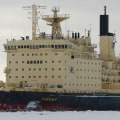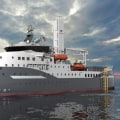In a joint statement and appearance on September 15, Joe Biden, Boris Johnson and Scott Morrison, leaders of the United States, Britain and Australia, announced what they described as an “enhanced trilateral security partnership”, clumsily called AUKUS. Its first initiative, and the jewel in its crown, will be collaboration on future nuclear-powered submarines for the Australian Navy. Under the agreement, Australia will buy at least eight US or UK submarines. Supporters say the obstacles to this ambitious plan can be overcome, while critics say they could be too much.
The plan for nuclear-powered submarines offers a powerful means for Australia to counter China's growing naval range and an escape hatch from a faltering agreement with a French company to build diesel submarines. For the Biden administration, the plan demonstrates support for a beleaguered ally and shows that it is serious about countering Chinese power. And for Britain, the plan could underpin its international position and its military industry in the wake of Brexit turmoil. But the Rubik's cube of intertwined complications that permeates the initiative could delay the delivery of the submarines or, according to critics, ruin the entire effort, leaving a dangerous breach in Australia's defenses and questioning the association's ability to deliver on its security promises.
US officials have already spent hundreds of hours in talks with their Australian counterparts and are under no illusions about the complexities. To carry out the plan, Australia must make great strides. It has a limited industrial base and built its last submarine more than 20 years ago. It produces a few nuclear engineering graduates each year. Its spending on scientific research as part of the economy has lagged behind the average for rich economies.
His last two plans to build submarines fell apart before any were made. Australia expects a change of fortunes after more than a decade of misadventures in its submarine modernization efforts. The United States and Great Britain face obstacles in expanding production of submarines and their high-precision parts for Australia, and in diverting skilled labor to South Australia, where Morrison has said that the ships will be assembled. Washington and London have heavy agendas to build submarines for their own navies, including huge ships to carry nuclear missiles. A report to the Senate Armed Services Committee last month warned that the shipbuilding “nuclear industrial base” continues to struggle to support growing demand from the US. Other experts have said that Australia should choose the British Astute-class submarine, which is cheaper and uses a smaller crew than large American ships.
The head of Australia's nuclear submarine working group, Vice Admiral Jonathan Mead said this week that his team was considering mature designs “in production” from Great Britain as well as from the United States. But British submarines have come off their production line relatively slowly and often late. British submarine manufacturer BAE Systems is also busy building Dreadnought submarines to carry the country's nuclear deterrence. The British successor to Astute is still at the design table; The government said last month it would devote three years to design work for him. The challenge doesn't end with the construction of the submarines. Safeguards to protect seafarers and populations, and to comply with non-proliferation obligations, will require a large accumulation of Australian nuclear safety expertise.
Residents of parts of Barrow-in-Furness, the town of 67,000 inhabitants that houses the British submarine construction yard, are given iodine pills as a precautionary measure against possible leaks when testing reactors. The Osborne Shipyard in South Australia, where Morrison wants to build nuclear submarines, is located on the outskirts of Adelaide, a city of 1.4 million. Australia operates a small nuclear reactor. Its only university program dedicated to nuclear engineering produces about five graduates each year. Australia would need many thousands more people with nuclear training and experience if it wants submarines. ONLY SIX countries in the world: The United States, Great Britain, China, France, India and Russia currently operate nuclear-powered submarines.
Australia may become an unlikely seventh if it can overcome all these obstacles. The Biden administration has already shown its commitment by dedicating hundreds of hours in talks with their Australian counterparts. With such strong support from two major powers in world politics today, it is possible that Australia will soon join this exclusive club.



